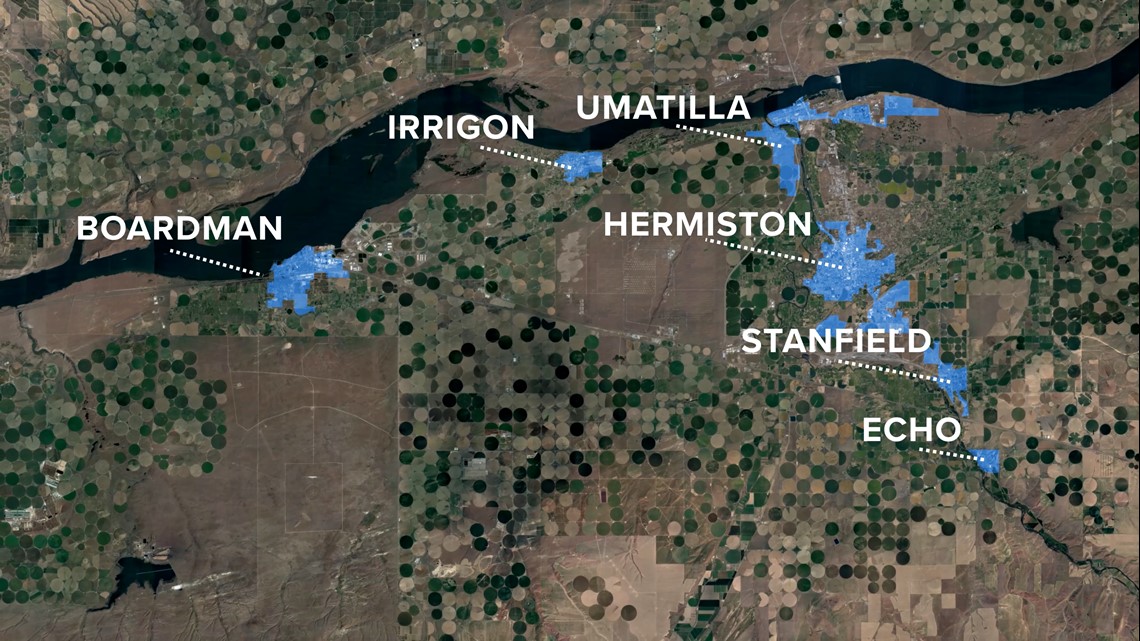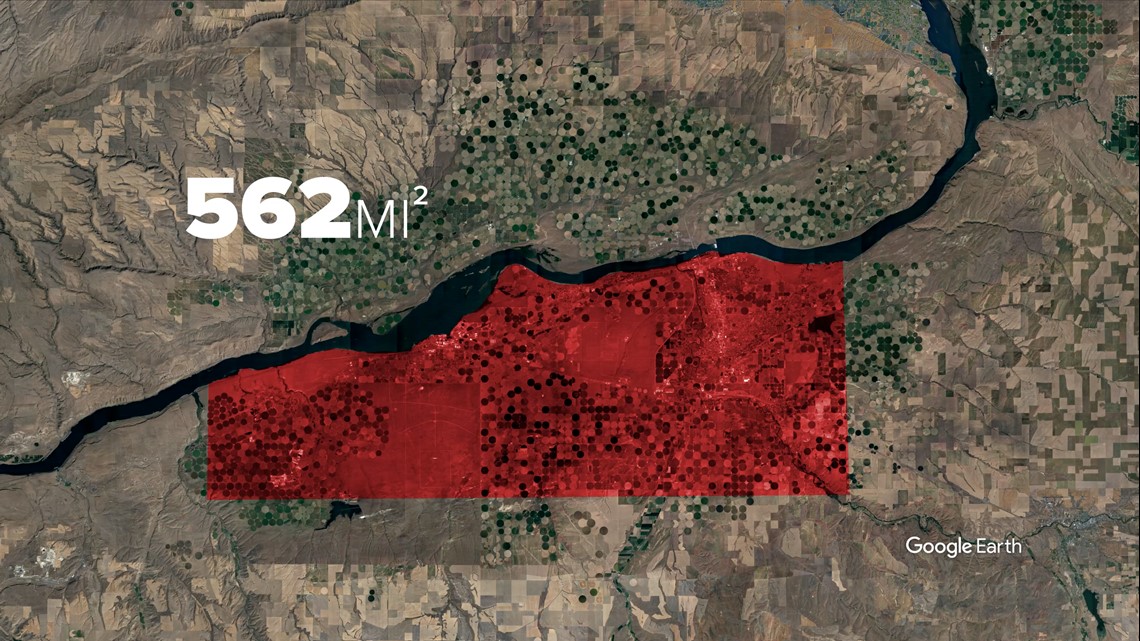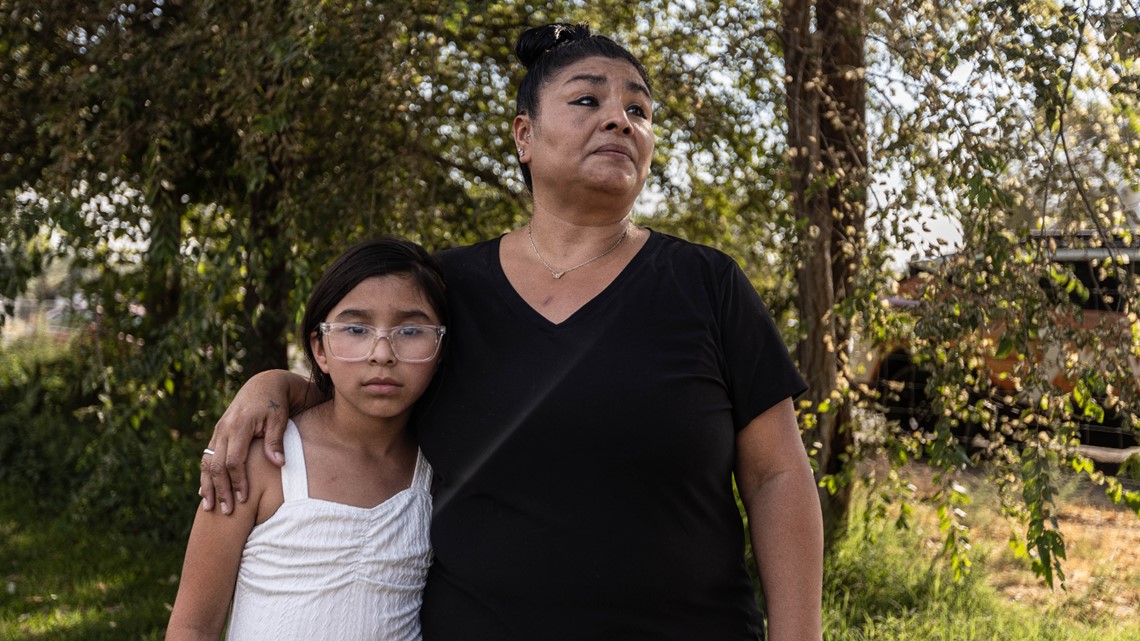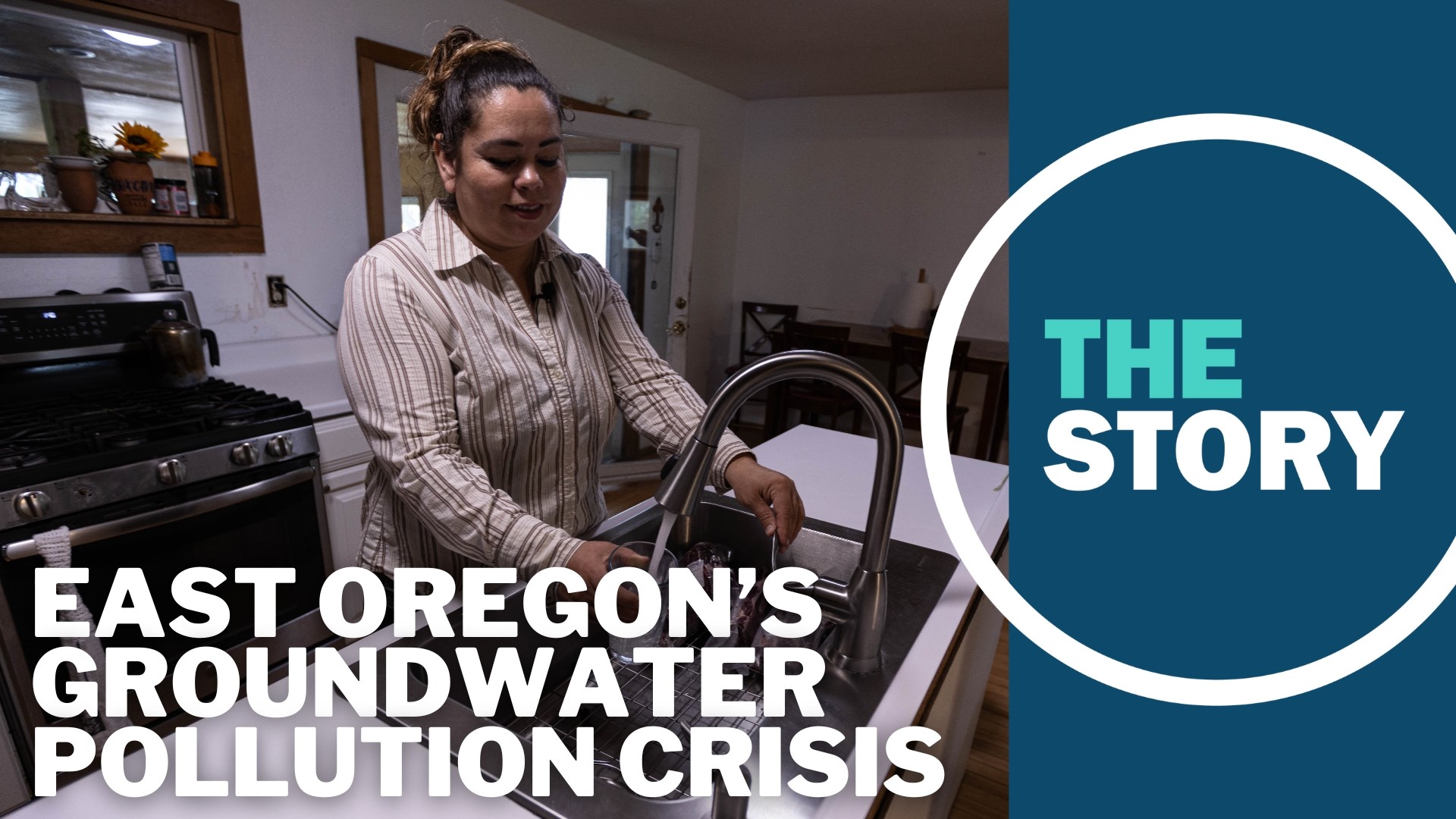BOARDMAN, Ore. — Oregon's drought crisis tends to grab headlines as large parts of the state face increasingly meager water supplies. But there's a separate water problem impacting thousands of residents of northeastern Oregon, one where the issue isn't one of quantity, but quality.
Thousands of Oregonians in Umatilla and north Morrow counties rely on private wells for drinking water, tapping into a massive underground aquifer. But pollution has steadily contaminated that groundwater source in recent decades, turning what was once safe water into a potentially toxic supply.
KGW's The Story travelled to eastern Oregon this summer to speak with residents and learn more about the problem. A large share of those impacted are low-income people. Many do not speak English. They may not have political power, but they share a belief that the water has made them sick — even if they can't prove it.
This is the first of four parts of the investigative series Tainted Waters. Check out the rest here:
Part 2: The Umatilla Basin's water crisis stems from industrial pollution, but it's hard to pin down one culprit
Part 3: Oregon regulators have had decades to tackle the Umatilla Basin's water pollution, but it's only gotten worse
Part 4: Bottled water forever? Umatilla residents demand more action to solve groundwater crisis
High nitrate concentration: 'We quit drinking this water'
The land around the cities of Boardman, Umatilla and Hermiston is a mosaic of perfect green circles of farmland, a sharp contrast with the tan canvas of the surrounding countryside. The region only sees about nine inches of rainfall per year, and the greenery is made possible only by irrigation water from the Columbia River.
Nearby residents who aren't connected to city systems rely on a different source: water drawn up from deep beneath the soil. Thousands of homes use private wells for their drinking water supplies, and for most of Oregon's history, that water was safe for home use.
More than 30 years ago, that began to change. Today, the problem is worse than ever.


Pat Suter began using his well 35 years ago, and he said back then the water tested at about 4.5 parts per million for nitrates — well below the maximum safe level of 10 parts per million set by the federal Environmental Protection Agency.
Nitrates are forms of nitrogen found in fertilizers and the waste of animals kept in feed lots, as well as water from commercial food production. They generally don't impact the appearance or taste of water, but they're dangerous for humans in high concentrations, especially for groups like children and pregnant women.
A more recent test of Suter's well water showed nitrates at 37 parts per million — nearly four times the danger level.
"We quit drinking this water, I quit drinking it about 10 years ago when I got re-married," he said. "My wife, they wouldn't drink this water. It didn't taste right. So we've been on bottled water for 10 years."
Suter's previous wife died of cancer, and he noted that she drank coffee brewed using the well water on a daily basis. He said he's also lost a total of 16 dogs to cancer over the years. No tests have been able to pinpoint the water as the cause of death of his wife or dogs, but he believes that's what happened.


Suter's current wife, Silvia, said that even though she didn't drink the water, she still used it for cooking until the recent test, relying on heat to make it safe. But boiling water doesn't get rid of nitrates, according to the EPA, and it can actually increase the concentration as some of the water steams off.
Silvia Suter said she wants to move to a place without groundwater contamination, but Pat Suter worries that they're stuck.


"How in the hell do you sell your place when the well won't test (safe)?" he said. "That's the big thing around here. I mean, you can't sell these places."
Aquifer contamination
Most of the region's wells tap into a massive aquifer beneath the Lower Umatilla Basin, an area that stretches across 562 square miles in north Morrow and northwest Umatilla counties.
Over the decades, nitrates from farm fertilizer, commercial food production and large animal have seeped through the ground and into the aquifer. The water pulled up from the wells still looks clean, but in some areas it's actually contaminated with nitrates.


Maria Martinez lives in one of the danger zones, but she said testing showed her well was safe when she moved in 32 years ago. She continued drinking the water for years, but suffered two miscarriages. She can't prove the cause, but she believes the water is to blame. She recently had her well tested again, and this time the concentration was 45 parts per million.
"I couldn't believe it, because we were drinking from that water," she said. "We've been bathing. My kids were even in the pool with that water, never thinking that water was, you know, poisonous to us."


Officials say as many as 4,500 private wells tap into the vast pools of water beneath the fields, and as many as 12,000 residents could be at risk.
A nearby resident, Raymond Akers, said his well water tested at just 4.3 parts per million for nitrates when he bought his home 24 years ago. After a recent new test showed the count had risen to 27.4 parts per million, he immediately switched to bottled water — and he said it brought about a startling change in his health.
"I've been fatigued for, I don't know, the last 10 to 15 years. I just didn't have no energy," he said. "Never put no relation to it, don't know if it is related. But I can tell you, when I stopped drinking the water, I found a whole level of energy I hadn't had in 15 years."
Another area resident, Luz Barajas, said she thinks the water led to her husband's death. The family moved in 10 years ago, and unlike in the other cases, she said they were warned from the beginning that the water wasn't safe to drink — but her husband sometimes ignored that.


"When we moved here, he planted these trees and came to water them, but he didn't bring any water (for himself). So I think he drank from that," she explained, speaking in Spanish through an interpreter. His health problems began abruptly after that, she said, and he died four years ago.
Barajas's daughter-in-law, Ruth Lopez, moved to the area three years ago. She said the pollution problem was so well known by that time that the bank wouldn't give her a loan until she installed a filter and had her well tested. Like many residents, she finds it hard to believe that the issue has been going on so long.
"It gets to me a lot, I mean, I think it's too much," she said, speaking in Spanish through an interpreter. "I mean wow, 30 years and no one can do anything. So you get disillusioned because you say 'oh, well if it's 30 years, they can't do anything, probably can't do anything now.'"
Mire el proyecto con subtítulos en español aquí: Agua contaminada: La crisis de agua en el este de Oregón
30-year problem
The issue isn't a new one for state regulators, but there's been little government action despite decades of discussion.
The state legislature passed the Oregon Groundwater Quality Protection Act in 1989, mandating statewide testing to preserve groundwater for future generations. The first samples in the Lower Umatilla Basin showed nitrate readings above the state's danger threshold of 7 parts per million, and the Oregon Department of Environmental Quality declared the region a Groundwater Management Area in 1990.
Progress since then has been achingly slow. It took four years to produce a report on the contamination sources and two more years to form a committee tasked with doing something about it. A full seven years after the declaration, the committee decided that a voluntary plan of action would be the best approach.
More than 25 years later, the state is on its third committee, and the nitrate contamination levels have only gotten worse, leaving residents furious.
"These people don't give a damn what's going on," said Mike Pearson, another Lower Umatilla Basin resident. "And if they do, they don't — damn sure don't do anything about it."

